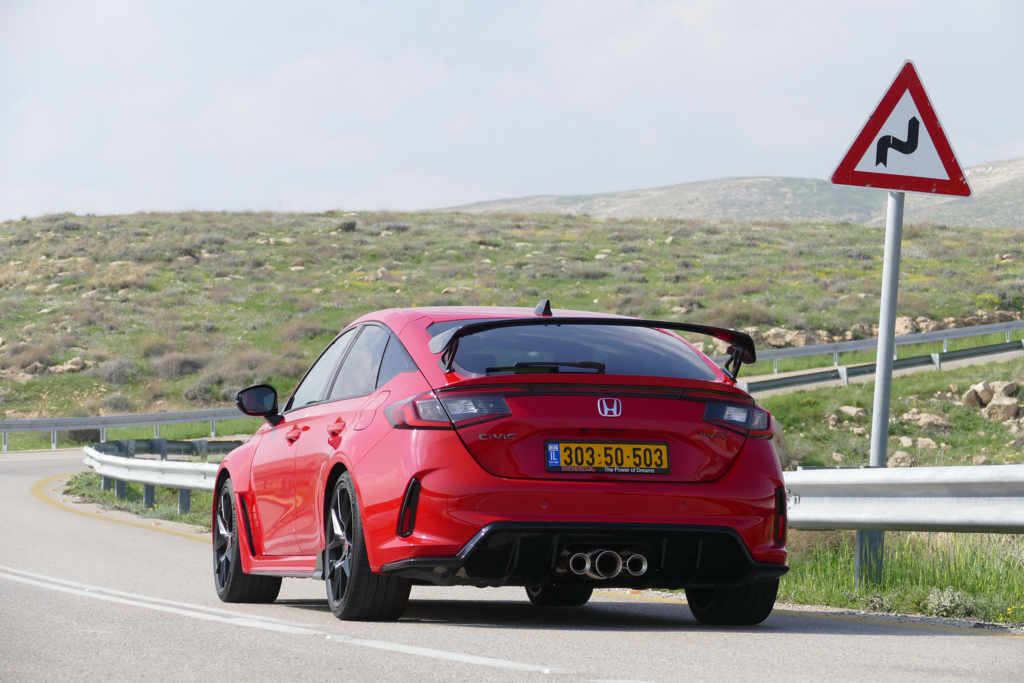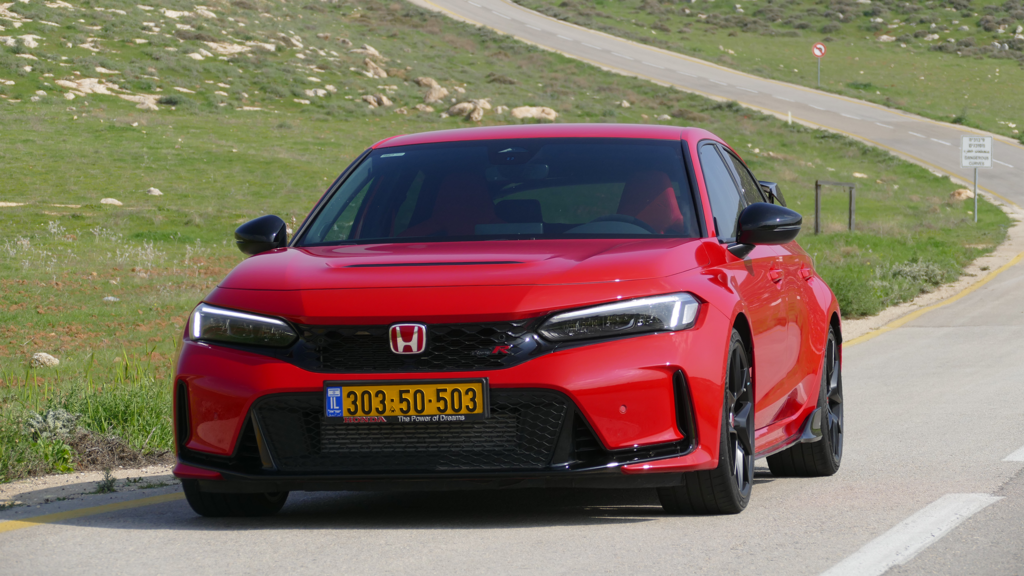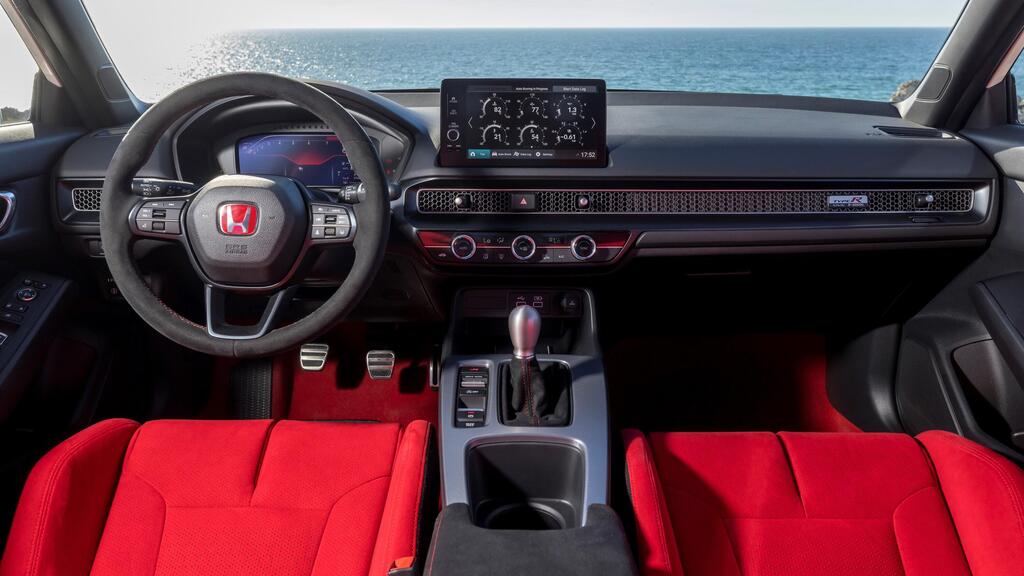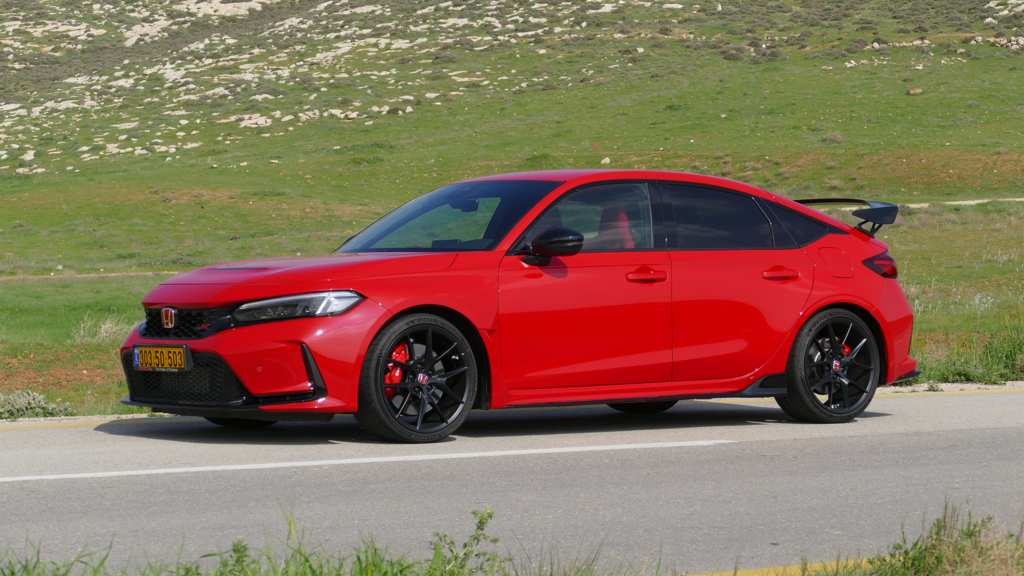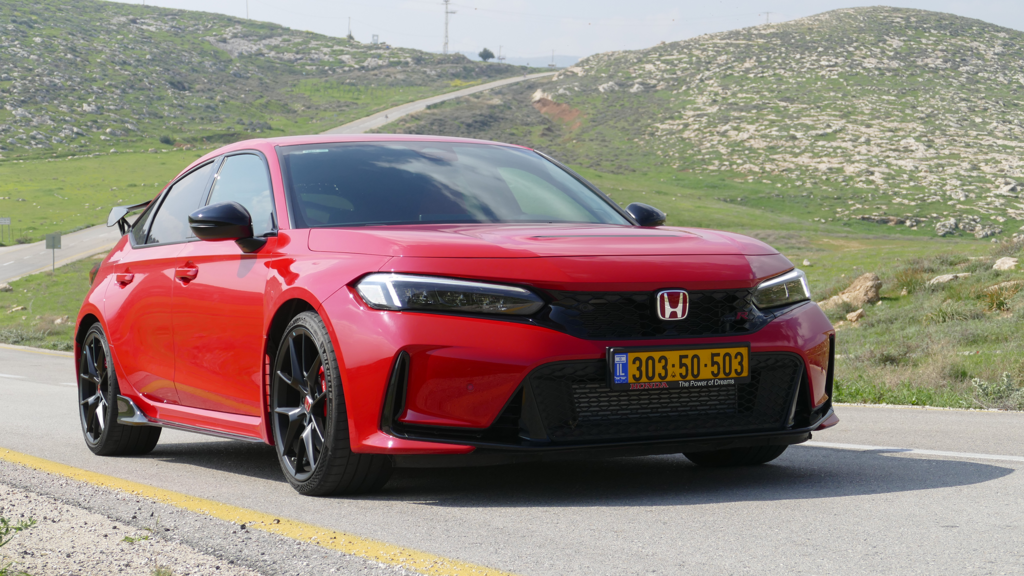Getting your Trinity Audio player ready...
Performance family cars, known as "hot hatches," were once among the most sought-after models in the European car market. They offered a unique combination of family practicality during the week and performance and dynamic capabilities that allowed drivers to show up Porsche and Ferrari drivers on winding mountain roads during the weekends.
Today, however, as the automotive industry races toward silent and clean electric power, performance family cars are on the verge of extinction. Renault and Peugeot, considered the pioneers of the genre, are no longer in the picture. Ford is expected to cease production of its ST models, and even Hyundai is ending the production of its gasoline-powered N models in Europe.
Yet, Honda, which has been struggling with low sales and a limited, expensive model lineup in recent years, is one of the few still present in this vanishing category. The new Civic Type R (code-named FL5) is the fifth, and likely the last, time the Japanese manufacturer is marketing a classic performance family car in Europe and Israel, with a high-horsepower gasoline engine, a gear shifter at the driver’s right hand, and a clutch pedal for the left foot.
Expectations for the model are sky-high, partly because its predecessor was considered a benchmark and the best in its category even at the end of its life cycle, and partly because Honda promises higher dynamic capabilities than ever before, backed by lap records at various race tracks worldwide. It reclaimed the "Queen of the Green Hell" title after dethroning the Renault Megane RS as the fastest car on the Nürburgring track in Germany.
It also set a lap record at its home track in Suzuka, 0.8 seconds faster than the outgoing Civic Type R (FK8) top version in limited production. Moreover, it needs to justify its significantly increased price tag, which now brushes the NIS 350,000 mark.
Bold design
The bold design has always been one of the prominent features of the Type R. The new model, however, has a much more solid and elegant appearance compared to its predecessors. Yet, it retains aggressive elements like pronounced wheel arches, three rear exhaust pipes, and a large rear wing that also contributes to impressive downforce for a car of its type (90 kg at 200 km/h).
Despite its solid look relative to its family roots, the attention it garners is usually reserved for significantly more exotic and expensive supercars.
The driver’s environment has undergone a dramatic upgrade, now appearing modern with a digital instrument panel (10.2 inches) that includes a racing-style HUD display (a large tachometer and warning lights as you approach the redline), and a higher-quality 9-inch touchscreen that displays temperature and pressure data, lap times, and telemetry information.
Of course, the Type R’s signature features remain, including bucket seats with some of the best support in the automotive industry, at least on the sane side of the Porsche GT3 RS, now positioned lower than before (by 8 mm), enhancing the immediate feel.
Unlike Porsche, the seats are also comfortable for prolonged driving. There’s also a metallic gear shifter perfectly positioned from the Alcantara-wrapped steering wheel. The quality of materials has significantly improved, with an original design for the air vents and a unique badge with a serial number from the production series, adding to the exclusive feel.
As before, the rear seat accommodates only two passengers, with improved space thanks to a longer wheelbase (+3.5 cm), but no separate air vents. The trunk is smaller by 10 liters (410 liters), but it includes a spare tire, a rarity in this category.
Safety features include autonomous braking, lane-keeping assist, adaptive cruise control, and blind-spot monitoring.
High octane
The model's powertrain is inherited from the past two generations, with a 2.0-liter four-cylinder gasoline engine and a six-speed manual gearbox, both meticulously refined. There’s a new turbocharger, more efficient intake and exhaust manifolds (10% and 13% better airflow respectively), and a lighter flywheel (18%).
While the power increase is modest (329 hp, marking a 9 hp increase), the performance is significantly better with super-fast responses and no turbo lag, reminiscent of naturally aspirated engines. However, the sound it produces isn't dramatic enough, even compared to the boosted engines of its competitors.
The connection is to the same six-speed manual gearbox, but with changes that provide more precise shifts under load, especially when downshifting from second to first gear required in tight hairpin turns. And, as with the engine, Honda has outdone itself, delivering what I believe is the most precise gearbox in the automotive industry, even compared to the Porsche GT3. With a short and precise throw and well-distributed gear ratios that allow optimal use of the engine.
This is a car that offers pure driving pleasure, engaging almost every part of your body. The auto-rev-matching system works perfectly, and if you’re a purist who can’t let go of the habit of heel-and-toe downshifting, you can disable it through the system’s menus. There’s also an improvement in performance, with the 0-100 km/h sprint shortened by 0.4 seconds, although a time of 5.4 seconds doesn’t impress anyone in the electric age.
Mechanical changes
Honda has made changes to the mechanical systems. The chassis has been stiffened (15%) with an aluminum hood and an epoxy resin trunk lid, allowing for a modest weight increase (35 kg) despite the larger dimensions.
The suspension setup remains similar but with wider track widths (about 4 cm at the front and 2 cm at the rear), allowing for wider Michelin Pilot Sport 4S tires (265/30) compared to the outgoing model’s Continental Sport Contact 6. In a rare move in the industry, the wheels are actually smaller than before (19 inches vs. 20 inches), contributing to very good ride comfort for a car of its type.
Gasoline perfection
It takes just a few minutes behind the wheel, plus a few turns aimed at the nose, to realize that the Japanese engineers have once again done the impossible by upgrading and perfecting Honda’s familiar recipe to the point of perfection. The excellent Brembo brakes (305-350 mm front-rear) provide exceptional stopping power with some of the best durability we’ve experienced on non-ceramic discs.
The steering is quick (2.1 turns lock-to-lock) and precise, and the limited-slip differential manages to transfer the power to the asphalt out of the corner better than all-wheel-drive performance models, without the typical torque steer of powerful front-wheel-drive cars, thanks to Honda’s sophisticated front suspension (dual-axis strut).
The speed the model can develop on a winding mountain road is far from politically correct. But even more impressive than the speed and the G-force it can generate is the unfiltered connection to the driver, a feeling very rare in an age dominated by electronic signals.
The hands are connected to the front wheels and the seat to the rear, and every action you take translates into an immediate response, almost like dedicated track cars. It adapts to any driving style, whether in a clean, uniform line or with a lightweight shift into the turn and a controlled rear slide, much like the small hot hatches of the past. It's pure joy.
The driving mode selector (Comfort, Sport, and R) now has a welcome addition that allows for individual adjustments for each system, such as leaving the shock absorbers in the softest setting, since the stiffest is suitable only for perfectly paved asphalt.
The new Type R proves that the Japanese manufacturer can still produce exciting and exceptional cars, so rare in today’s automotive industry. Honda does so by surpassing its predecessor in every area, not only earning a place in the hall of fame of the best hot hatches of all time but likely positioning it as the best of them all.
How Honda will maintain this unique character and exceptional capabilities in the electric future just around the corner is hard to say right now. But we can be optimistic and encouraged by the excellence the Type R demonstrates, proving Honda still has the engineering power to perform miracles. Until that happens, and as long as there are gas stations with 98-octane pumps, it’s hard to think of a better one.


